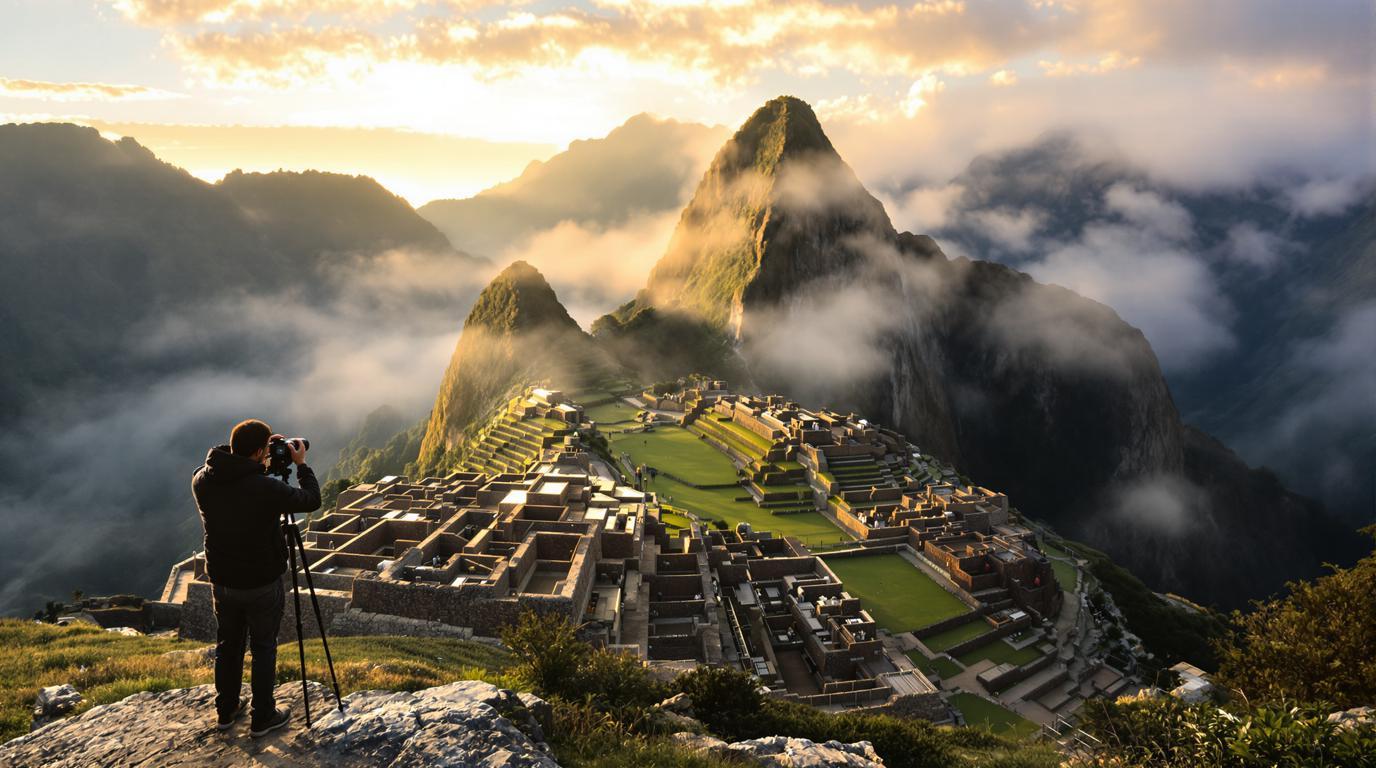Beyond Bucket Lists: Machu Picchu’s Hidden Magic Through a Photographer’s Lens
The ancient citadel where time stands still
Perched 7,970 feet above sea level in Peru’s misty Andes Mountains, Machu Picchu isn’t just an archaeological wonder—it’s a masterclass in Incan engineering that’s survived 500 years of earthquakes without mortar. Unlike the heavily filtered Instagram posts, this UNESCO World Heritage site offers an authenticity that strikes deeper than any social media caption can convey.
“The stones speak here if you know how to listen,” explains Manuel Choqque, a fourth-generation Quechua guide. “Each sunrise reveals different secrets of my ancestors.”
The 2025 rule change reshaping how visitors experience history
Starting next year, new regulations require all visitors to hire certified guides and restrict groups to 16 people maximum. This shift aims to preserve the site while enhancing the educational experience. The four designated circuits now control foot traffic while protecting vulnerable areas from erosion—a reminder that sustainable tourism matters.
Savvy travelers are booking 3-6 months ahead through Peru’s official Ministry of Culture portal, particularly for the coveted Huayna Picchu hiking permits that sell out within hours of release.
The gateway town where thermal waters heal tired hikers
Aguas Calientes (literally “hot waters”) sits nestled in a deep valley below Machu Picchu. After exploring ancient stones, travelers soak in the town’s natural hot springs—a ritual that brings as much joy as viewing the ruins themselves. The therapeutic 104°F waters offer perfect muscle relief after tackling the site’s steep stone staircases.
The town’s market stalls burst with hand-woven textiles that tell stories through intricate patterns, similar to ancient stone pathways found throughout the Mediterranean that connect villages through centuries-old routes.
A mountain sunrise ritual worth the 3:30am alarm
The Guardian House viewpoint transforms at dawn. As first light breaks over jagged peaks, the citadel emerges from darkness stone by stone. This golden hour perspective rivals even Africa’s most breathtaking safari daybreaks.
Photographers clutch cups of coca tea while waiting for that perfect moment when sunlight first strikes the Temple of the Sun, illuminating precisely placed astronomical windows.
Beyond the postcard: five secret spots the crowds miss
The Temple of the Moon remains remarkably empty despite being just a 45-minute hike from main ruins. This cave temple features some of the finest stone carvings on site yet appears in few guidebooks. Similarly, the Mandor Waterfalls offer a 2-hour round-trip escape through orchid-filled cloud forests.
“Most visitors rush through Machu Picchu in two hours, seeing only 20% of what’s truly special,” notes archaeologist Elena Castillo. “The site rewards those who slow down.”
Where ancient stones meet ecological wonders
Machu Picchu sits at the convergence of Andean highlands and Amazon jungle, creating a biodiversity hotspot. This unique positioning creates ecological transitions similar to Africa’s remarkable multi-ecosystem mountains.
Over 300 orchid species bloom throughout the sanctuary, alongside rare spectacled bears that occasionally appear on remote trails. The Incan builders intentionally incorporated this natural wealth into their sacred architecture.
Capturing stone masterpieces built without modern tools
The precision-cut stones at Machu Picchu rival the engineering marvels of Gaudí’s gravity-defying cathedrals, yet were created centuries earlier without metal tools or wheels. Some walls contain stones with more than 40 perfectly fitted angles, resembling three-dimensional puzzles.
This architectural precision, combined with strategic astronomical alignments, reveals sophisticated mathematical understanding that continues to challenge modern engineers. Like Japan’s enigmatic underwater ruins, Machu Picchu guards ancient knowledge we’re still deciphering.
When afternoon mists roll through the ruins, transforming solid stone into ghostly silhouettes, it’s easy to understand why the Incas considered this mountain sanctuary a bridge between the physical and spiritual worlds—and why modern travelers still feel transformed long after they’ve returned home.
